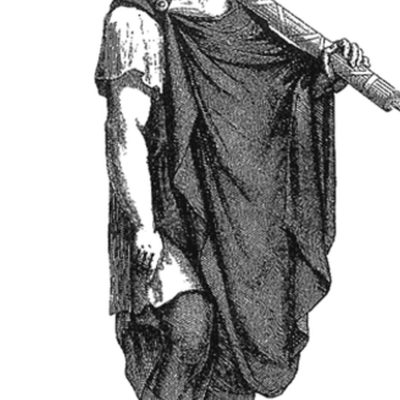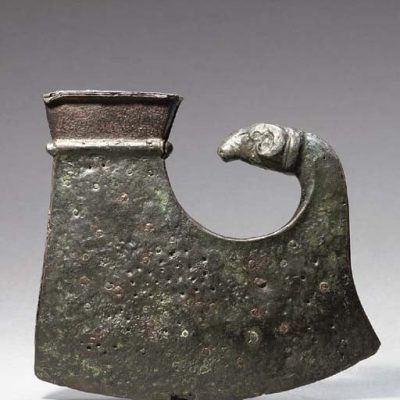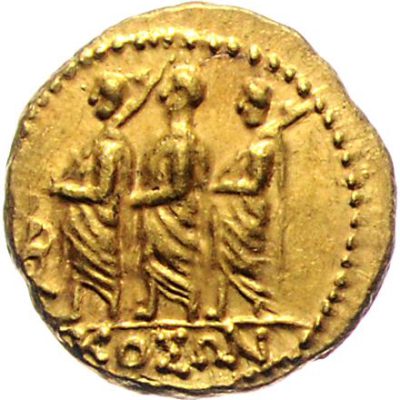Chapters
Roman lictor (from ligare, meaning “to bind”) was a lower civil servant who initially preceded Roman kings (rex), and then some senior officials and emperors. In fact, his role was to protect important figures in Rome who held imperium, or military, civil and religious powers. Imperium was owned by the following officials: dictator, consuls and praetors. In the case of the dictator, it was summum imperium, ie unlimited power, the consul had the so-called imperium maius (greater authority), while the praetor had the so-called imperium minus (lesser authority). People who owned the imperium had the right to sit on the curule chair and use the lictors’ escort. The number of lictors and the rods held by them indicated the extent of the official’s power.
History of lictors
The genesis of using lictors’ guards goes back to the times of the kingdom. It was probably from Etruscanthe that Romans borrowed this custom, more precisely from the city of Vetulonia. Moreover, there is a suggestion that the lictors owe their name to the Etruscan cane lauchum, translated as “royal”. Another suggestion of origin is licium (“belt”) or licere (“to summon”).
According to Titus Livius, the lictors were appointed by the first legendary king Romulus, who appointed twelve people. The reasons for the appointment of just twelve lictors can be found in two matters. The first assumes that this number reflected the number of birds that appeared during the augur reading and symbolized the rise of the Romulus state. The second version, supported by Livy, says that this number was taken from the world of Etruscan rulers who had one lictor for each of the twelve states.
Originally, the lictors were selected from the lower social strata, but the basic requirement was that the person appointed to this position should be free. The military themselves, upon retirement, was automatically able to assume this function.
Lictor had to be a strong and well-built manable to exercise. He was discharged from military service and received a salary of 600 sesterces at the beginning of the Roman Empire. Usually, the lictors were selected by the officials they were supposed to protect.
Initially, the likers were linked to curial commissions(comitia curiata). Each curia appointed its own lictors (30 curia – 30 lictors), where 24 were allocated to two consuls and 6 to the praetor.
Number and functions of lictors
The main task of the lictor, as mentioned, was to protect the official holding the imperium. They accompanied him during his speech at rostra and stood next to him when he sat or were at the clerk’s house, in the vestibule. Lictors accompanied the official wherever he went: on the forum, to the house, temple or bathhouse. However, not always lictors guaranteed full protection. Titus Livius tells how the propraetor Quintus Pleminius was beaten by Roman soldiers when he demanded that the consequences be drawn against the disobedient military:
[…] suddenly inflamed with much more ungovernable rage, without respect, not only for the dignity of their commander, but of humanity, they made an attack upon the lieutenant-general, having first mutilated the lictors in a shocking manner; they then cruelly lacerated the lieutenant-general himself, having cut him off from his party and hemmed him in, and after mutilating his nose and ears left him almost lifeless.
– Titus Livius, Happening since the founding of the city, XXIX.9
They held a bunch of rods (fasces) on their arms, most often made of birch (betulla) or elm twigs tied with a red thong. Outside of pomerium or during the war, they were tucked with an axe, which was a symbol of power over life and the right to the executive. In the event that a junior official encountered another representative of the magistracy, the lictors lowered their fasces towards him (the so-called submittere fasces). Such a moment, for example, presented by Plutarch of Chaeronea, when during the war with Sertorius, there was a meeting of the current consul Quintus Caecilius Metellus Pius with the young general Gnaeus Pompey:
Pompey, then, when he went to meet Metellus after the battle and they were near each other, ordered his lictors to lower their fasces, out of deference to Metellus as his superior in rank.
– Plutarch, Pompey, 19
In the event of the chief’s victory, the lictors decorated their fasces with a laurel wreath. In the event of the official’s trip abroad, the lictors remained in the country.
As the official travelled, the lictors were organized in an orderly line in front of him, with the principal lictor(also called proximus or primus) at the head. If there was a crowd on the road, the lictors’ protection was to push people away and make a passage for a government official. In addition, lictors had the right to arrest or punish passersby, of course as ordered by the official. They also took part in the execution of death sentences.
The number of lictors indicated the position and importance of the official. Below is a list of individual offices and the number of lictors:
- Dictator (dictator): 24 lictors outside Pomerania, 12 inside the city (this rule was abolished for Sulla’s dictatorship, who, incidentally, was the first to have that number of lictors);
- Rex and consul (consul): 12 lictors;
- Proconsul (proconsul): 12 lictors (Ulpian mentions 6 though);
- Magister equitum: 6 likors;
- Praefectus urbi: 6 lictors;
- Praetor (praetor): 6 lictors outside the pomerium, 2 inside city;
- Propretor (propraetor): 6 lictors, during the reign of Octavian Augustus the number was reduced to 5 (hence their name quinquefascalis);
- Legate (legatus pro praetore) and quaestor (quaestor): 5 likors;
- Edyle (curule aediles): 2 likors each.
On the Titus’ arch, one of the reliefs shows a triumph involving 13 lictors, probably to underline the importance of the event. Interestingly, in Egypt, one lictor guarded the sacred bull of Apis.
Sometimes lictors accompanied prominent residents to special events, such as funerals or when reconciliation took place, as an expression of the City’s gratitude.
During the empire, the emperors were accompanied by 12 lictors. During the reign of Domitian (81-96 CE), this number was increased to 24. During the late Empire, lictors gradually ceased to be their role and they disappeared.
In Rome, lictors wore a toga. During the triumph and outside the city, they wore a red military coat (sagulum); a black coat at the funeral. Fasces were held in the left hand and leaned on the left shoulder; at funerals, lictor’s rods were carried on the other side. The bundles of rods (fasces) were tied with a red thong with an axe (securis) stuck in them.
Lictor curiatus
Lictor curiatus (pl. lictores curiati) was a special kind of lictor that accompanied Pontifex Maximus (the high priest of Rome) and instead of fascis they helped wear, among others sacrificial animals. They could also accompany other high priests, such as flamines or Vestals if they had to attend a public ceremony.
During the Empire, women belonging to the imperial family were accompanied by two such lictors. The lictores curiati were also responsible for convening curial commissions and keeping them in order.










